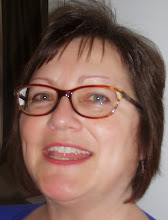Golders Green Crematorium
Situated
directly opposite the Golders Green Jewish cemetery, the Crematorium describes
itself as a “secular resting-place for those of all faiths and none”. Aside
from my family’s connection with the place, the crem’s Garden of Rest also
happens to be a great place for a Sunday walk… with a bit of celeb-spotting
thrown in!
 |
| View across the Garden of Rest to the crematorium buildings |
 advantages and practicalities of cremation. The following year,
Thompson published an article himself in which he recommended the procedure,
and soon afterwards the Crematorium Society was founded. At their inaugural
meeting the signatories (among them Millais and Trollope) declared: “[we] disapprove the present custom of
burying the dead, and we desire to substitute some mode which shall rapidly
resolve the body into its component elements, by a process which cannot offend
the living, and shall render the remains perfectly innocuous. Until some better
method is devised, we desire to adopt that usually known as cremation.”
advantages and practicalities of cremation. The following year,
Thompson published an article himself in which he recommended the procedure,
and soon afterwards the Crematorium Society was founded. At their inaugural
meeting the signatories (among them Millais and Trollope) declared: “[we] disapprove the present custom of
burying the dead, and we desire to substitute some mode which shall rapidly
resolve the body into its component elements, by a process which cannot offend
the living, and shall render the remains perfectly innocuous. Until some better
method is devised, we desire to adopt that usually known as cremation.” |
| One of the three columbaria |
The Society met with difficulties from the outset. Public
opposition made finding a suitable site in London – where need was most urgent
– extremely hard. Then in 1879, despite an increasingly desperate shortage of
space in which to bury people, the government decided to set its face against
cremation, and made it illegal. However, a public appeal was launched and consent
was eventually given for the country’s very first chapel and crematorium to be
built in Woking, the first service taking place in 1885.
 |
| Philipson Mausoleum |
The Garden of Rest covers a total area of 12 acres and
is Grade I-listed. There are several large tombs, including the grand Philipson
Mausoleum of 1914 (both this and the main crematorium building are Grade
II-listed), three columbaria, two ponds, a bridge and a large crocus lawn. It also
has a children’s section and a “communist corner”.
The bronze statue (left), depicting a mysterious
draped figure lifting a young girl heavenwards, is called “Into the Silent
Land” and was a gift from the Royal Society of Arts in 1937.
 People from all walks of life are commemorated at
Golders Green, from politicians to artists, writers and musicians, as well as
many big names from stage and screen. Enid Blyton, Ronnie Scott, Duke
Ellington, Sid James, Jimmy Jewel, Bernard Bresslaw, Peter Sellers, Anna
Pavlova, Ivor Novello, Joe Orton, Charles Rennie Mackintosh and Bram Stoker are
some of those whose ashes are scattered here. Much-visited memorials include
those of suffragist Millicent Fawcett, Sigmund Freud and Marc Bolan – his
commemorative tablet is stolen on a regular basis and has to be replaced.
People from all walks of life are commemorated at
Golders Green, from politicians to artists, writers and musicians, as well as
many big names from stage and screen. Enid Blyton, Ronnie Scott, Duke
Ellington, Sid James, Jimmy Jewel, Bernard Bresslaw, Peter Sellers, Anna
Pavlova, Ivor Novello, Joe Orton, Charles Rennie Mackintosh and Bram Stoker are
some of those whose ashes are scattered here. Much-visited memorials include
those of suffragist Millicent Fawcett, Sigmund Freud and Marc Bolan – his
commemorative tablet is stolen on a regular basis and has to be replaced.
Many other famous figures have been cremated here, but
had their ashes moved to a different location, including Stanley Baldwin,
Neville Chamberlain, Ernest Bevin, the poets TS Eliot and Rudyard Kipling, and
the writers Henry James and HG Wells.
On average, over 2,000 cremations are carried out at Golders Green every
year.



